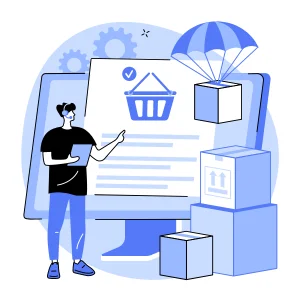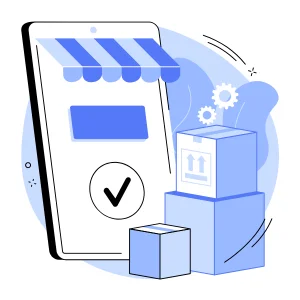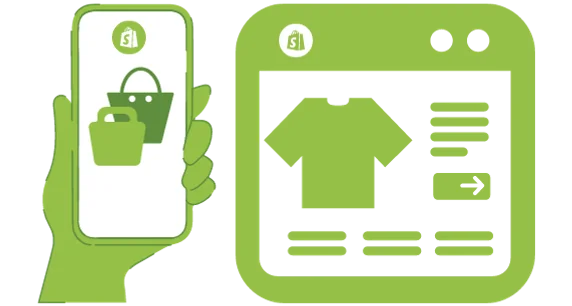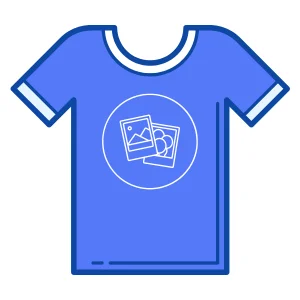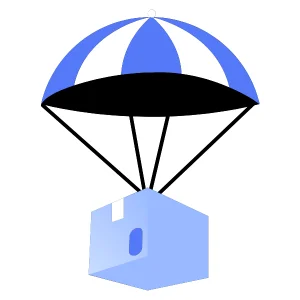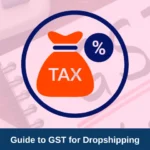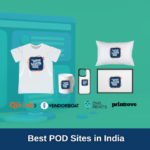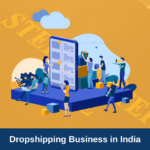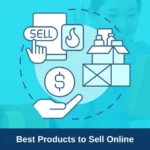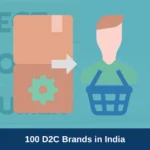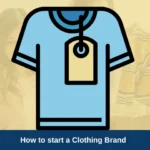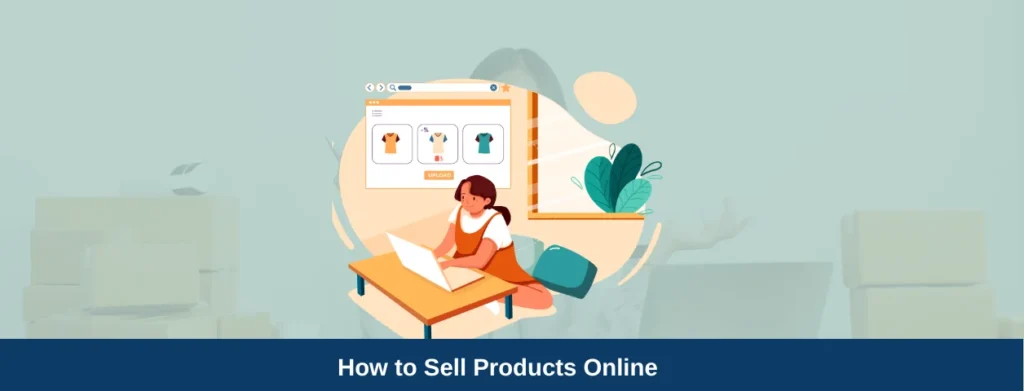Selling products online can be competitive, but it is also a powerful way to reach a broad audience and generate profitable revenue. Navigating this landscape can be difficult for new entrepreneurs.
According to Statista research, the number of online shoppers in India is predicted to increase by 427 million by 2027. This presents a massive opportunity for entrepreneurs to start their online businesses.
If you’re wondering how to sell products online, you’re in the right place.
In this blog guide, we will help you start a successful online business in India by sharing possible ways of selling products online and tips for reaching potential customers through an on-demand business strategy.
Why sell products online?
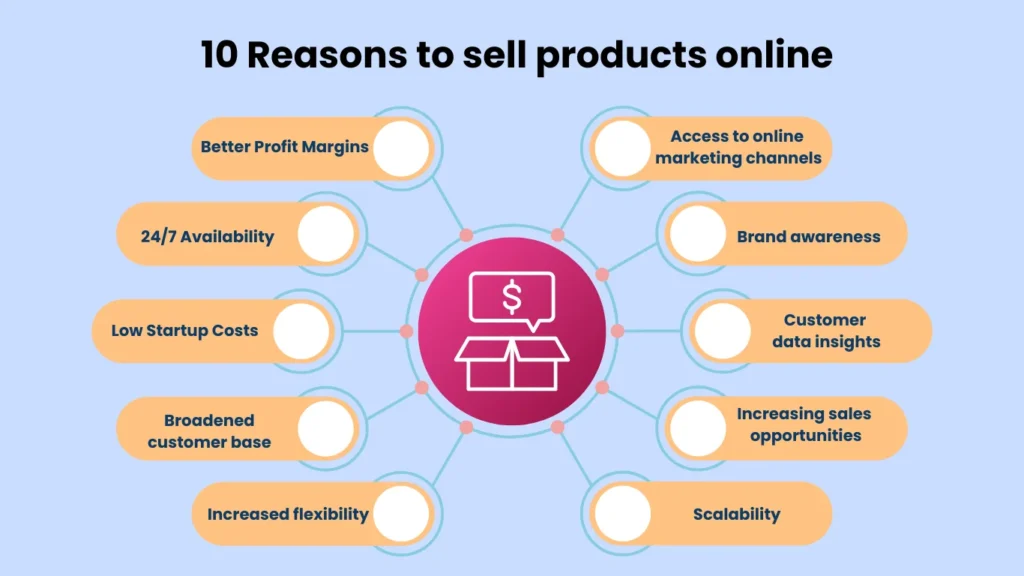
Selling things online has many benefits compared to physical stores. In India, more consumers are especially interested in online shopping. Here are the ten reasons to sell online.
1. Better margins
An online selling business can give you 10%- 20% profit margins. However, profits can vary depending on your product niche selections, pricing strategy, selling platforms, and marketing efforts.
2. Availability
Traditional marketplaces only allow you to sell things during specific hours. However, online stores can run their business 24/7.
This availability will enable customers to make purchases at their convenience. This convenience leads to increased sales and allows you to earn money even while you sleep.
3. Cheaper startup costs
Selling items online can be cheaper than selling them in a physical store. There is no need to invest in managing inventory, paying rent to run the business, or paying employee wages. Also, online advertising can be more cost-effective than traditional methods.
4. Broadened customer network
The most significant benefit of selling products online is the ability to reach a global audience. An e-commerce store allows you to sell products anywhere in the world, which will expand your customer base and increase your sales.
5. Increased flexibility
Selling stuff online provides many benefits to customers. It gives them a personalized and convenient shopping experience.
Also, online shopping offers the convenience of comparing prices and reading customer reviews to choose the best products. This leads to higher customer satisfaction and drives traffic and sales to the stores.
6. Access to online marketing channels
Online marketing channels allow sellers to leverage social media platforms, SEO, Email marketing, and more.
This helps them promote their products cost-effectively compared to traditional advertising methods. It also helps drive traffic to their online store and reach their desired customer base.
7. Brand awareness
Nowadays, many people search for branded products. Selling products online creates brand visibility for your stores, helping you build brand awareness and familiarize customers with your products.
8. Customer data insights
Selling products online provides valuable customer insights and data. With the help of website analytical tools, you can gather customer preferences, shopping habits, and more.
This insight can be helpful to optimize your marketing strategy to offer better customer needs.
9. Increasing sales opportunities
Selling online improves your business because investments are low, and marketing is cost-effective. When you use effective marketing techniques, there is a high chance of getting sales and potential customers.
Online selling offers many opportunities for sellers to sell products using marketplaces, social media channels without websites, and more.
10. Scalability
Expanding an online business is more straightforward than expanding a physical store.
As your business grows, you can broaden your product offerings, access new markets, and manage higher order volumes without the need for significant infrastructure modifications.
This adaptability makes it easier to scale your business operations.
Steps to sell products online in India: A Detailed Guide
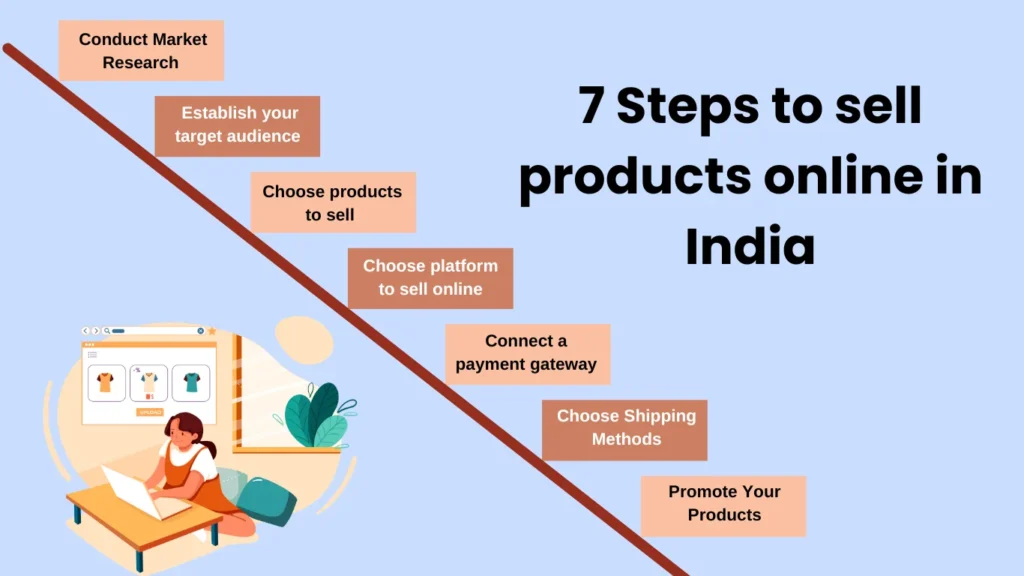
Selling products online involves several steps. Here is a detailed guide to help you get started on your online journey.
Step 1: Conduct market research

Market research is the process of obtaining background information on the many aspects of the business in which you intend to start an online business, such as its profitability, target market scope, and trends. This is a crucial step to take before you begin selling online.

a) Define your objective
Before you start researching, define your objective.
Determine what you are going to search for, such as customer preference, market demands on products, pricing strategies, and demographics of your product niches.
Clearly setting your objective will help you get faster results.

b) Discovering market niche
Understanding the market niche and trends is essential to stand out from the competition.
Analyze your competitors, their products, pricing, and marketing techniques.
Stay updated with market trends, technological advancements, and consumer preferences.
This will help you identify potential challenges in business.

c) Gather Insights through Primary and Secondary Research
Primary: You can obtain data from the target market through surveys, experiments, or interviews.
For Example, if you are interested in selling clothing, conduct surveys to gather insights on preferred fit, style, and brand choices.
Secondary: This includes acquiring and analyzing publicly accessible data, such as that found on government websites or in research papers released by various firms and organizations.
For example, one might analyze industry reports to understand market trends and pricing strategies in the clothing market.
Step 2: Establish your target audience
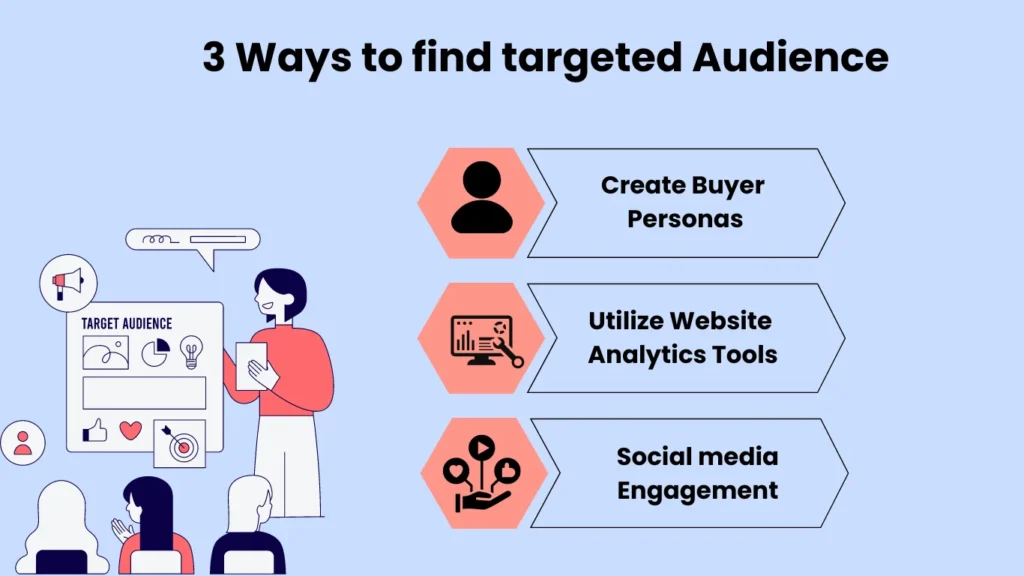
Knowing who to target is also an essential element of selling online. Your target audience is the exact set of people within your target market who would most likely be interested in the products or services you offer. Here, we share some practical ways to find your targeted customers.

a) Create Buyer Personas:
A persona is a fictional figure in marketing who represents a certain customer type.
It assists in determining the attributes, requirements, and habits of your target audience.
According to experts, marketers should create three to five personas.
When designing personas, consider the following factors:
- Gender, Age, Location, Income
- Education Level, Job, Marital status, Interests
- Channels of communication
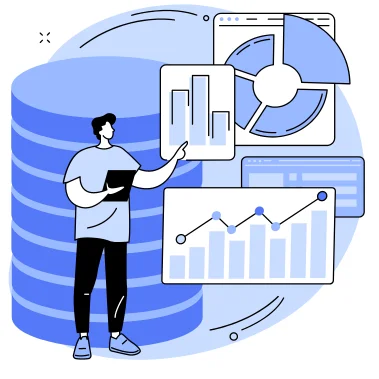
b) Utilize Website Analytics Tools:
Use website analytics tools, such as Google Analytics, to access a wealth of data about your website visitors. Analyze demographics, interests, and user behavior to gain insights into: –
- Who is visiting your website?
- What content are they engaging with?
This data helps you understand the demographics and online behavior of your current audience, potentially helping you to find your targeted customer.

c) Social media Engagement:
Social media platforms offer unique opportunities to find your audience.
For example, join online social media communities and forums such as Quora and LinkedIn and engage in trending discussions about your niche, answer relevant questions, and observe new trends.
This will help you find targeted customers and their preferences.
Step 3: Choose products to sell: A detailed product ideas to sell online
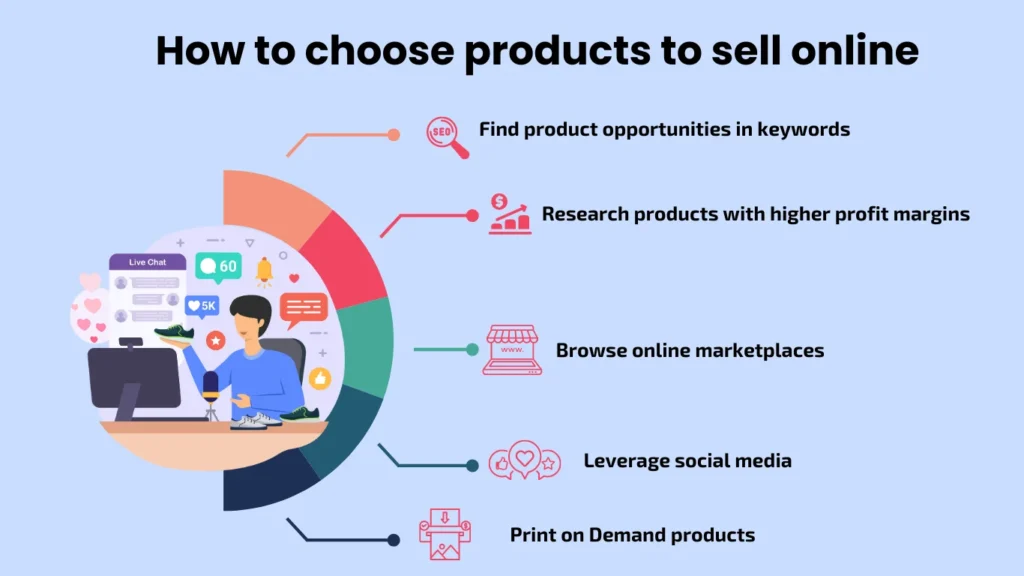
Choosing products for your business can be difficult, especially if you don’t know where to begin. Consider the following variables to identify products people are passionate about.

a) Find product opportunities in keywords:
Use keyword research tools like Google Keyword Planner and Semrush to find high-demand products that people are searching for.

b) Research products with higher profit margins:
Look for products that are in high demand but have low supply on the market. Consider the dropshipping business model for finding potential products. Utilizing this market research, you can get profitable margins.

c) Browse online marketplaces:
Browse online marketplaces like Amazon Best Sellers and Flipkart to find the best-selling products and pricing.
Reading customer reviews on marketplaces can help you better understand how to choose products based on customer preferences.

d) Leverage social media
Social media platforms are excellent for identifying trending products. By monitoring trending hashtags, following influencers, and viral content, you can discover emerging trendy products.

e) Print on Demand products
By using print-on-demand services, you can offer a wider variety of products without having to do a lot of research on new items. All you have to do is pick a trustworthy supplier.
Top 10 Demand product ideas to sell online in 2024






- Clothing & Accessories
- Baby Products
- Bags
- Car and Motorbike Accessories
- Computers & Accessories
- Home and living products
- Office Products
- Sports & Fitness products
- Skincare products
- Gaming products
📌Check out our Most Demanding Products to Sell Online in India blog guide for getting interesting product ideas
Step 4: Best platform to sell online in India
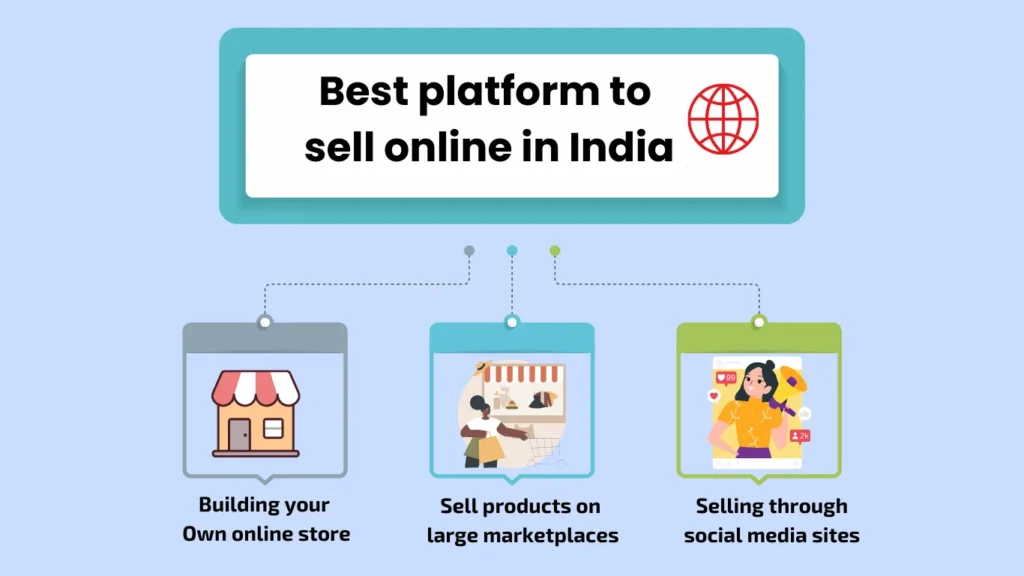
Choose where to sell your stuff online. To sell products online, you have three primary options:
1. Building your online store
Creating an online store has many benefits, including reaching more customers. Running your store is the best way to sell online because you’re in complete control.
Most people expect online businesses to have their own website for shopping flexibility. To sell online, you must create your own eCommerce website.
From this store, you may upload items, collect money, handle orders, and shipping. In brief, you will have a digital storefront where you can perform all company tasks, just like a traditional store.
There are so many e-commerce platforms that help to create your online stores.
Here are some popular platforms to choose from:
- Shopify – (easy to use, suitable for beginners)
- Wix – (drag-and-drop website builder with e-commerce features)
- BigCommerce -(powerful features for scaling businesses)
- WooCommerce – (user-friendly plugins)
2. Sell products on large marketplaces
The marketplace is the best way to sell if you want a high profit with less investment.
You do not need a vast Budget to set your ideal online. Instead, you can sell your product using the marketplace provided by others. You will have to pay a commission if your product is sold.
Here we share the top marketplaces where you can sell products online in India:
- Amazon
- Ebay
- Flipkart
- Mynthra
Recommended Guides
👉Check out our guides to learn how to sell online on Amazon
3. Selling through social media sites
Social media is the most accessible and affordable way to reach customers. The key is to discover which platform will suit your business requirements. To find this, keep the following in mind:
- Find the social media platform where your target audience mostly hangs out online.
- Research your customers to find out what kind of product they like to consume on social media.
Here we share the top social media platform where you can sell products online in India:
- YouTube
👉Check out our social media for a business blog guide to learn how social media platforms help to start an online business and improve sales.

Step 5: Connect a payment gateway
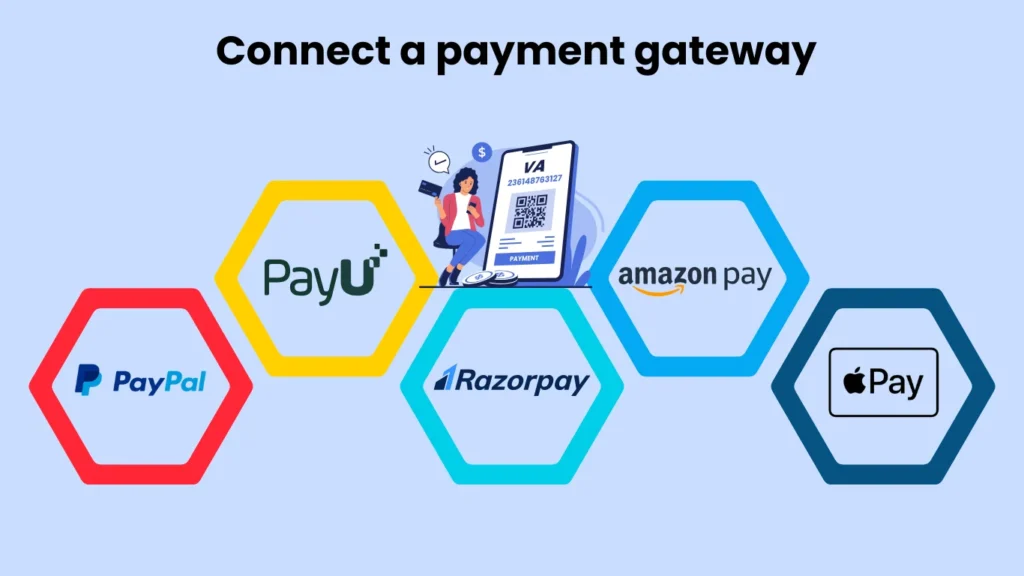
We have listed some of the top payment gateways that you can consider for your online product-selling business.
- PayPal: Higher fees than Indian gateways
- Stripe: Limited adoption in India currently
- Amazon Pay: Seamless for Indian e-commerce customers
- Razorpay: Great for startups and SMBs, easy to integrate
- ApplePay: Limited adoption in India currently
- InstaMojo: Good for freelancers, individuals, and small businesses
- Cashfree: Used by many Indian marketplaces
- PayU: Caters to Indian merchants and consumers
- Paytm Business: Wide reach, popular with Indian consumers
- CCAvenue: For large enterprises and eCommerce sites
👉Check out the best payment gateway India guide to learn more factors about considering various payment options to accommodate a broader audience.
Step 6: Choose Your Shipping Methods
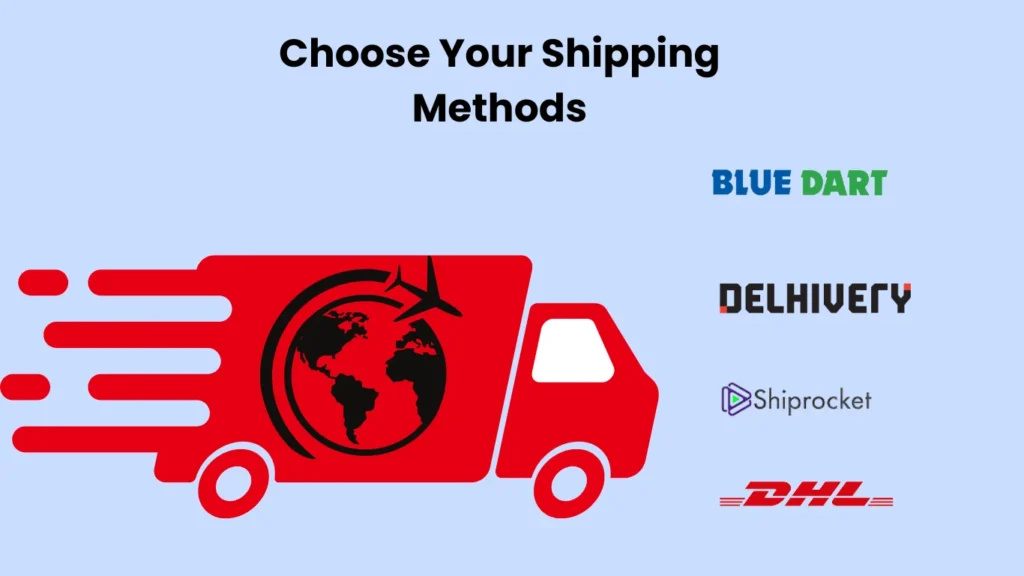
Many customers prefer fast shipping. The Indian postal service is known for providing the best shipping service at a low cost. Numerous logistics companies offer both domestic and international shipping services. Here are some top shipping service providers.
- Blue Dart Express
- Delhivery
- DHL
- Shiprocket
- FedEx
- Nimbus
Using an effective shipping service strategy can help expand your online business internationally.
Step 7: Promote Your Products
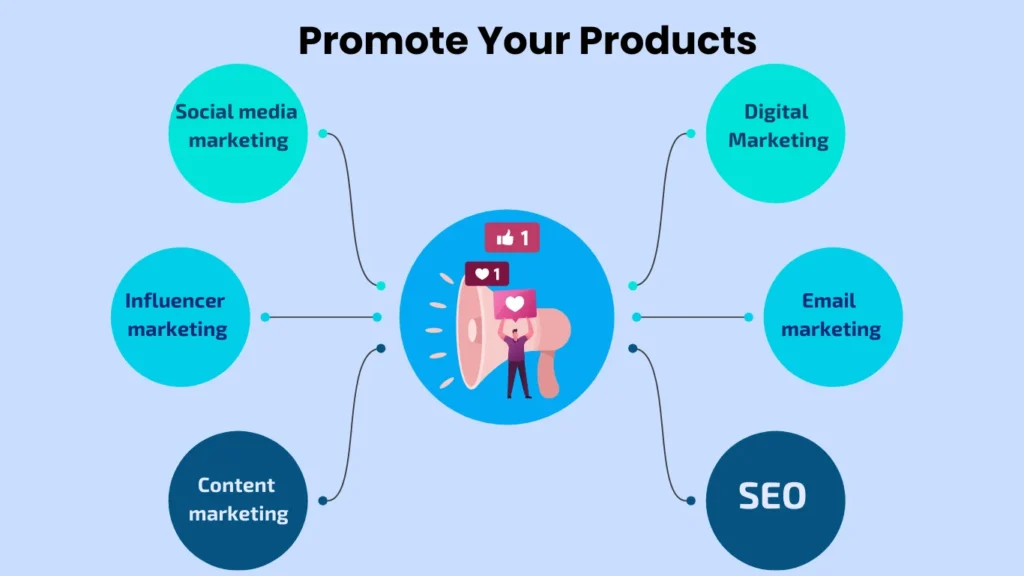
After you’ve successfully launched your online business, it’s time to spread the word about it. If you want to see progress in your online selling business, you should utilize many e-commerce marketing methods to increase your online visibility. Here are some marketing strategies to promote your products online.

a) Social media marketing
Social media channels are excellent tools for spreading information about your online shop.
The majority of these sites, such as Instagram and Facebook, are free to download, making them cost-effective.
All you have to do is create high-quality social content that will engage your potential customers.
For example, you can promote your products using Facebook Ads and Instagram Ads. This way, you can reach a broader audience and drive traffic to your online store.
Recommended Guide:
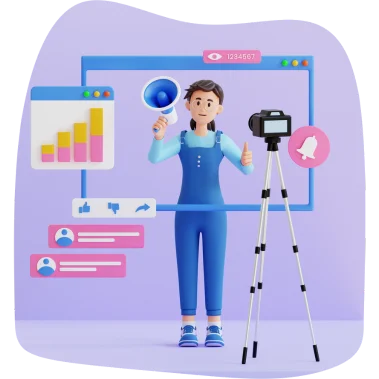
b) Influencer marketing
You can partner with popular social media users to promote your products and services.
You can send your sample products to influencers and tell them to make videos about reviewing your product quality and your collections.
This way, you can reach more customers and increase sales.

c) Content marketing
With this technique, you can create valuable content about your products, such as their quality, variety, and collections.
You can market this content through social media posts, blogs, videos, and more.
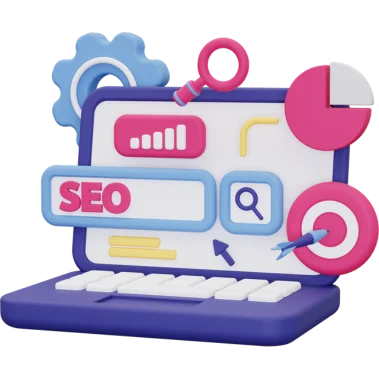
d) SEO( Search Engine Optimization)
SEO is a digital marketing strategy that aims to enhance a website’s visibility.
The process involves optimizing a website or online content to improve its visibility and ranking on search engine results pages for specific keywords.

e) Email marketing
This marketing channel enables you to keep customers on your email list informed about new product launches, services, and programs.

f) Digital Marketing
In general, there are two forms of digital marketing.
- Paid advertising (SEM): Make use of a budget to establish a quick online presence.
- Organic (SEO): A long-term technique for increasing your search visibility.
Tips to sell products online
Selling products online requires a unique strategy to stand out from the competition. Here are some tips to maximize your online sales and increase customer engagement.
Optimize Your Website for a better user experience:
Optimize your website content using effective keywords and relevant graphics for a better user experience. Ensure your website has better mobile-friendly responsive designs for easy navigation.
Use High-quality Product images.
Invest in professional photographs of your products to showcase online. Clear images or mockups can increase the chance of making sales online. Provide mockups or pictures from different angles. This could provide a better understanding of your products.
Improve SEO
Improving SEO on your websites can help you stand out from the competition. Use optimized titles and product descriptions on your page.
It’s essential to know up-to-date trends and tools for SEO. Use relevant keywords in your content.
Create blog posts about your products. This will reach more customers online.
Use Social Proof
Add social proofs like product reviews, ratings, customer testimonials, and customer-generated content to your websites.
This will improve the customer experience and help a new audience make purchases on your online store.
Provide excellent customer service.
Prioritize providing quick and helpful customer service at all stages of the buying process. Respond quickly to inquiries and concerns, offer accurate information, and resolve any issues professionally.
Make the payment & checkout process simple.
Avoid requesting excessive information, provide guest checkout options, and ensure the entire process is user-friendly. Also, offers various secure and convenient payment options to accommodate different customer preferences.
Run Ads
Utilize Amazon Ads for targeted product visibility and optimize Google AdSense placements for broader audience engagement.
Offer competitive pricing and discounts
Set competitive prices for your products. Consider factors such as production costs and market demand when setting prices. Offering special promotions and discounts can also attract customers.
Leverage social media
Utilize social media platforms to promote products, engage with followers, and build brand awareness. Create engaging content, run targeted ads, and collaborate with influencers to expand reach.
How to sell products online from home
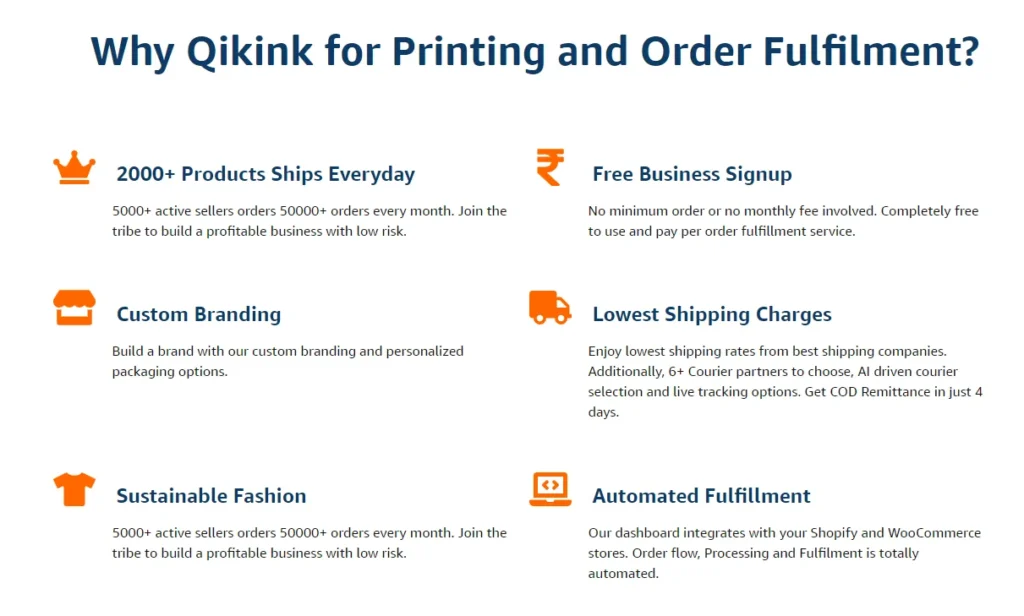
You can sell products online from home with the help of Print on Demand services.
With the POD model, there is no need to keep inventory or store products, as they are created and shipped as soon as they are ordered.
Online stores can offer a wide range of designs and products without having to produce them in advance, allowing for more variety and customization.
Also, with the POD model, you can access a wide variety of products without stocking them.
All you do is find a trustworthy POD supplier like Qikink. Qikink offers excellent custom printing and fulfilment methods.
How to sell products online with the Qikink Print on Demand model:
Step 1: Signup With Qikink
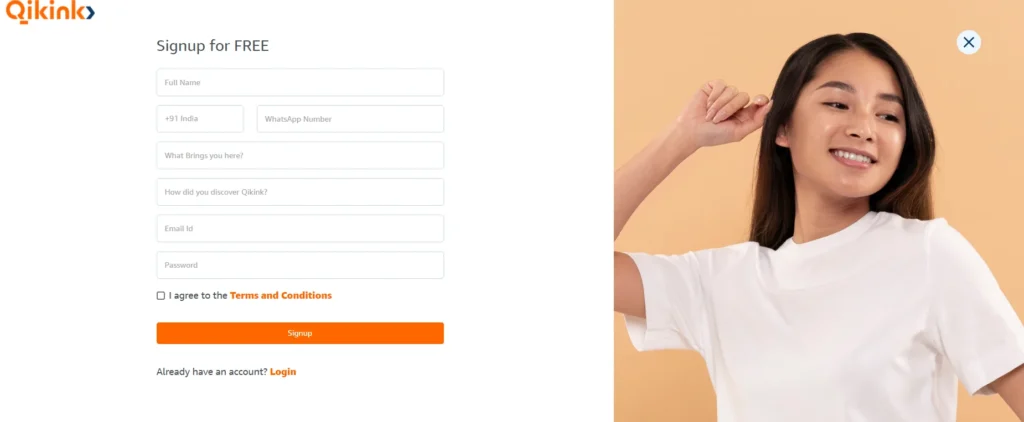
To start your online selling business, you have to create an account with Qikink. Qikink doesn’t charge a signup or subscription fee.
No documents are required to use Qikink’s services. Also, GST is not required to start your business with Qikink.
Step 2: Connect your E-commerce store with Qikink

Qikink offers seamless E-commerce integration services with Woocommerce and Shopify platforms. Connect your Shopify, Woocommerce, or any other store using our custom-built Plugins or open APIs.
👉Check out this guide for detailed steps
Step 3: Create products using your designs at Qikink Dashboard
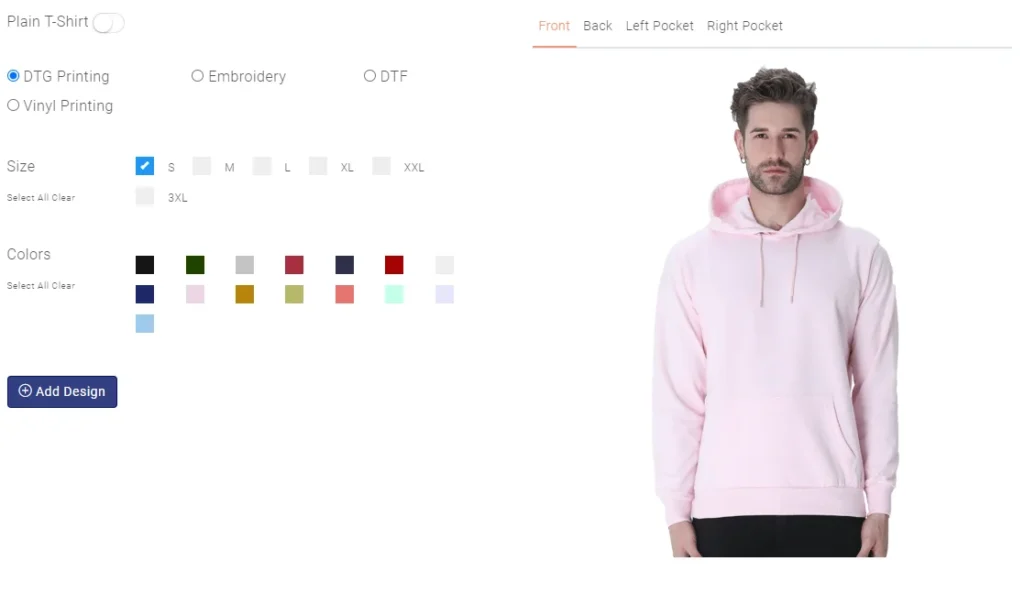
Qikik offers a wide variety of the most demanding Print on Demand products in various categories, such as:
Qikink offers excellent product creation tools for selecting products for your online store. You simply find unique designs for printing products.
Now, Use the Qikink product creation tool to select the product size and printing type to create products and upload your designs.
👉Check out this guide for detailed steps
Note:
It is essential to place sample orders before fulfilling customer orders. With sample orders, you can check and feel the quality of the fabric, find defects, and ensure that the printing quality meets your standards.
Step 4: Update and launch your store
Update your store with the on-demand products created in the Qikink dashboard. Upload quality images with engaging product descriptions on your store.
Add FAQs and relevant keywords about your products to reach more customers.
Step 5: Promote your store
Promote your store using marketing strategies to increase sales and brand awareness.
Use social media platforms like Instagram and Facebook to improve brand visibility and Engage with customers for repeat business.
Step 6: Check the Orders
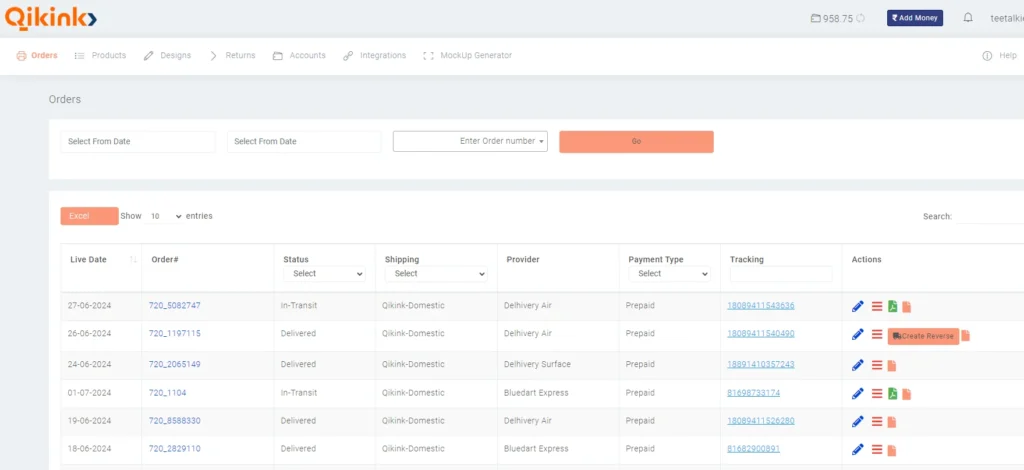
Check the orders the customer placed. Once you receive your orders, they will automatically reflected on the Qikink Dashboard.
You can check the customer details and click on the Push To Live button to confirm the order.
Step 7: Qikink custom prints and delivers the orders
Qikink offers custom branding services. You can use neck labels, hang tags, thank you cards, and free logo stickers printed with your brand name.
Once the order is received, Qikink does custom printing, branding, packing with accessories, and delivery to your customers under your online store brand name.
You promote your products efficiently right from your home, and Qikink handles everything.
Final Thoughts
Starting to sell products online in 2024 can seem a bit complicated, but it is easy if you follow some simple steps and strategies. One of the most incredible ways to get into selling stuff online is by using Print on Demand.
It’s fantastic because you don’t have to handle or invest in inventory. This means you save money and avoid having stuff you can’t sell.
With Print on Demand, you can create fantastic designs for things like t-shirts and mugs and only make them when someone wants to buy them.
This way, you can try out different ideas without losing money. It’s a smart move for anyone looking to start selling online without too many risks.
Read More
- What is White Label Meaning in Business & How Does it Work? (Updated 2024)
- How to Start a Profitable Tshirt Business From DAY 1
- Ultimate Dropshipping Guide for Beginners in 2024: How to Start a Successful Online Store Without Inventory
- Elevate Your Online Business: The Power of ECommerce Dropshipping
Frequently Asked Questions
Is it profitable selling online?
Selling products online is profitable. According to recent statistics, millions of people are interested in online shopping, and the number is increasing. Also, you don’t have to invest in inventory.
what is most selling product online?
Here we share the most selling products online:
- Clothing & Accessories.
- Baby Products
- Computer Accessories
- Electronic products
- Home decor products
- Skincare products.
Can i sell branded products online?
Yes, you can sell branded items online through the dropshipping model. With this model, you can sell products online using your own brand name.
Best sites to sell products online?
Here are some best sites to sell products online
- Amazon
- Flipkart
- Ebay
- Shopify
- Indiamart



















